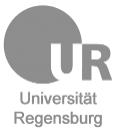Movilidad y asentamiento en el Cercano Oriente antiguo:
introducción y problemas abiertos
DOI:
https://doi.org/10.35305/cl.vi23.148Palabras clave:
Movilidad, Asentamientos, Pastoralismo, Urbanismo, EspacialidadResumen
La cuestión del asentamiento y la movilidad de las poblaciones ha sido un foco de interés recurrente en el estudio del llamado Cercano Oriente antiguo. Las fuentes antiguas, desde una perspectiva urbana, presentaban una visión estereotipada, y por lo general negativa, de los pastores móviles, y los períodos de retraimiento y crisis del urbanismo han sido pensados como momentos de ascenso de los grupos móviles. Ahora bien, si, como se ha argumentado, los pastores podían vivir en las ciudades, o incluso las ciudades constituir asentamientos de pastores, la distinción entre entornos asentados y móviles parece diluirse. El presente volumen propone pensar las interrelaciones dinámicas entre los aspectos de movilidad y asentamiento. En este sentido, la movilidad no se restringía a determinados modos de subsistencia o habitación (como el pastoreo móvil), sino que la circulación de personas, animales, objetos e ideas cruzaba las relaciones de poder, las prácticas religiosas o el intercambio, y abarcaba espacialidades diversas. Las contribuciones aquí reunidas abordan distintos aspectos de estas interrelaciones y problemáticas en situaciones específicas.
Descargas
Citas
Adams, Robert M. (1978) “Strategies of maximisation, stability, and resilience in Mesopotamian society, settlement, and agriculture”, Proceedings of the American Philosophical Society 122: 329-35.
Akkermans, Peter M. M. G. y Schwartz, Glenn M. (2003) The Archaeology of Syria. From Complex Hunter-Gatherers to Early Urban Societies (c. 16,000-300 BC). Cambridge: Cambridge University Press.
Algaze, Guillermo (2018) “Entropic Cities: The Paradox of Urbanism in Ancient Mesopotamia”, Current Anthropology 59(1): 23-54.
Barnard, Hans y Wendrich, Willeke (eds.) (2008) The Archaeology of Mobility. Old World and New World Nomadism. Los Angeles: Cotsen Institute of Archaeology, University of California
Bar-Yosef, Ofer and Khazanov, Anatoly M. (eds.) (1992) Pastoralism in the Levant: Archaeological Materials in Anthropological Perspective. Madison: Prehistory Press
Beaudry, Mary C., y Parno, Travis G. (2013) Archaeologies of Mobility and Movement. New York/Heidelberg/Dordrecht/London: Springer.
Bretell, C.B., and Hollifield, J.F. (eds.) (2015) Migration Theory: Talking across Disciplines. London: Routledge.
Charpin, Dominique y Joannès, Francis (eds.) (1992) La circulation des biens, des personnes et des idées dans le Proche Orient Ancien. Actes de la XXXVIIIe Rencontre Assyriologique Internationale. Paris: Editions Recherche sur les civilisations.
Casimir, Michael y Rao, Aparnu (1992) Mobility and Territoriality: Social and Spatial Boundaries among Foragers, Fishers, Pastoralists and Peripatetics. New York/Oxford: Berg.
Cresswell, Tim (2006) On the Move: Mobility in the Modern Western World. New York: Routledge.
Cresswell, Tim (2010) “Towards a politics of mobility”, Urban Planning and Design 28: 17-31.
Equipe Ecologie et Anthropologie des Sociétés Pastorales (eds.) (1979) Pastoral Production and Society. Cambridge: Cambridge University Press.
Fattori, Anita (2024) “Keeping in Touch: Language and Mobility of Assyrian Women in the Old Assyrian Period”, en: Kulakoğlu, F. y Michel, C. (eds.), Kültepe at the Crossroads between Disciplines: Society, Settlement and Environment from the Fourth to the First Millennium BC. Turnhout: Brepols, pp. 75–92.
Finkelstein, Israel and Perevoletsky, Avi (1990) “Processes of sedentarization and nomadization in the History of the Negev and Sinai”, Bulletin of the American Schools of Oriental Research 279: 67-88.
Gilboa, Ayelet y Yasur-Landau, Assaf (2020) (eds.), Nomads of the Mediterranean: Trade and Contact in the Bronze and Iron Ages: Studies in Honor of Michal Artzy. Leiden: Brill.
Hartog, François (2002) El espejo de Heródoto. Buenos Aires: Fondo de Cultura Económica.
Honeychurch, William (2014) Alternative Complexities: The Archaeology of Pastoral Nomadic States, Journal of Archaeological Research 22: 277-326.
Ingold, Tim (2009) “Against Space: Place, Movement, Knowledge”, en: Kirby, P. W. (ed.), Boundless Worlds: An Anthropological Approach to Movement. New York/Oxford: Berghahn Books.
Jaruf, Pablo (2021) “Ciudades y urbanismo en el mundo antiguo: una introducción”, Revista del Instituto de Historia Antigua Oriental 22: 5-23. DOI: https://doi.org/10.34096/rihao.n22.10914
Khazanov, Anatoly M. (1984) Nomads and the Outside World. Cambridge: Cambridge University Press.
Kupper, Jean-Robert (1959) “Le rôle des nomades dans l'histoire de la Mésopotamie ancienne”, Journal of the Economic and Social History of the Orient 2(2): 113-127.
Leary, Jim (ed.), (2014) Past Mobilities: Archaeological approaches to movement and mobility. London: Ashgate.
Liverani, Mario (1987) “The collapse of the Near Eastern regional system at the end of the Bronze Age: the case of Syria”, en: Rowlands, M.; Larsen, M. y Kristiansen, K. (eds.), Centre and Periphery in the Ancient World. Cambridge: Cambridge University Press, pp. 66-73
Lemche, Niels Peter (1985) Early Israel: Anthropological and Historical Studies on the Israelite Society before the Monarchy. Leiden: Brill.
Marfoe, Leon (1979) “The Integrative Transformation: Patterns of Sociopolitical Organization in Southern Syria”, Bulletin of the American Schools of Oriental Research, 234, 1-42.
McMahon, Augusta (2023) “Urban Heterogeneity in the Early Cities of Northern Mesopotamia”, Journal of Urban Archaeology 8: 47-63.
Nicolle, Christophe (ed.) (2004) Nomades et sédentaires dans le Proche-Orient ancien. Compte rendu de la XLVIe Rencontre Assyriologique Internationale, Paris, 10-13 juillet 2000. Paris: Editions Recherche sur les Civilisations.
Nielsen, Axel E. (2006) “Estudios internodales e interacción interregional en los Andes Circumpuneños: Teoría, método y ejemplos de aplicación”, en: Lechtman, H. (ed.), Esferas de Interacción Prehistóricas y Fronteras Nacionales Modernas: Los Andes Sur Centrales. Lima: Instituto de Estudios Peruanos – Institute of Andean Research, pp. 29-62.
Osborne, James F. (2021) The Syro-Anatolian City-States: An Iron Age Culture. Oxford: Oxford University Press
Porter, Anne (2012) Mobile Pastoralism and the Formation or Near Eastern Civilizations. Weaving Together Society. Cambridge: Cambridge University Press.
Rowton, Michael B. (1974) Enclosed Nomadism, Journal of the Economic and Social History of the Orient 17 (1): 1-30.
Rowton, Michael B. (1976) “Dimorphic Structure and Topology”, Oriens Antiquus 15: 17-31.
Salzman, Philip Carl (2004) Pastoralists: Equality, Hierarchy, and the State. New York: Routledge.
Scott, James C. (2022 [2017]) Contra el estado. Una historia de las civilizaciones del Próximo Oriente antiguo. Barcelona: Trotta.
Sheller, Mimi and John Urry (2006) “The new mobilities paradigm”, Environment and Planning 38: 207–26.
Silva Castillo, Jorge (ed.) (1984) Nómadas y pueblos sedentarios. México: El Colegio de México.
Szuchman, Jeffrey (ed.) (2009) Nomads, Tribes, and the State in the Ancient Near East: Cross-disciplinary Perspectives. Chicago: University of Chicago Press.
Tebes, Juan Manuel (2013) Nómadas en la encrucijada: Sociedad, ideología y poder en los márgenes áridos del Levante meridional del primer milenio a.C. Oxford: Archaeopress.
Trinka, Eric M. (2022) Cultures of Mobility, Migration, and Religion in Ancient Israel and its World. London: Routledge.
Urry, John (2007) Mobilities. Malden, MA: Polity.
Wilkinson, T.J. (2003) Archaeological Landscapes of the Near East. Tucson: The University of Arizona Press.
Descargas
Publicado
Cómo citar
Número
Sección
Licencia

Esta obra está bajo una licencia internacional Creative Commons Atribución-NoComercial-CompartirIgual 4.0.

















 Centro de Estudios sobre Diversidad Cultural
Centro de Estudios sobre Diversidad Cultural

